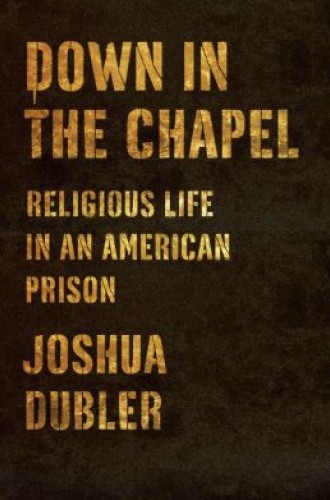Free on the inside
The seven of us sit in a room in a maximum-security prison. I come and go weekly; they will be there for the rest of their lives. They tell me about their faith. One man has a calloused bump on his forehead, the result of his salat, bowing down to God, pressing his head into his rug, into the concrete floor of his cell: a dedication to prayer. “Allah found me in my cell,” he says. The other men nod their heads, even though they are not Muslims; they are Christians of various traditions: Baptist, Methodist, Roman Catholic, Jehovah’s Witness. Yet each knows what it feels like for his God to find him in prison, regardless of profound differences in theological language and faith practices. When I’m with them, I’m within a religious pluralism unknown to me outside of prison.
In Down in the Chapel: Religious Life in an American Prison, Joshua Dubler explores this phenomenon of religious pluralism within U.S. prisons by spending time with the various faith communities that congregate in the chapel at the maximum-security prison in Graterford, Pennsylvania. From the chapel, Dubler tracks the religious practices of the faithful among the 3,500 men confined inside Graterford’s walls. His book is a tapestry of scenes from worship services, small group discussions, and conversations with imprisoned men who open their spiritual lives to him. A Roman Catholic chaplain describes his visitation of the forgotten men on death row as a “ministry of presence”: “to have somebody drop in . . . to show them that they’re remembered.” A correctional officer engages in “Christian apologetics” while policing the chapel. A Muslim prisoner named Baraka’s discussions and debates enlighten the author’s observations of incarcerated life.
Dubler shows up at Graterford as a budding ethnographer and becomes a man captured by friendships—by relationships mediated through religious encounters in prison. “How truly bizarre that this awful place,” he reflects, “should afford such profound pleasure to those who feel called to enter into it and partake in its overflowing meaningfulness.”






